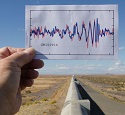The surface of Mars is probably too toxic for bacteria to survive
will.ferguson

Mars is not a very welcoming place. It’s cold, there’s hardly any atmosphere, and its bombarded with deep space radiation. Even the soil wants to kill you; as the Phoenix lander confirmed in 2009, the Martian regolith is laced with perchlorates—chlorine-based compounds that, when heated up, can rip apart organic materials, like cells and their building blocks.
To try to find out exactly what those perchlorates might do to Martian microorganisms, researchers at the University of Edinburgh pitted bacteria against this compound in a battery of tests. What they found does not bode well for the search for life on Mars: Under Mars-like conditions, the perchlorates were indeed toxic to the microbes.
“We knew before that any life would have an incredibly hard time to survive on the surface, and this study experimentally confirms that,” says Dirk Schulze-Makuch, an astrobiologist at Washington State University, who wasn’t involved in the new study.



